22 restaurants and hundreds of dishes reviewed – Dumpling dinner dreams and disasters
Dim Sum is arguably one of Cantonese cuisine’s finest contributions to the world. It’s one of the few types of foods I can eat repeatedly without tiring of it, if only because of its endless variety. Many of the restaurants in Chinatown serve Dim Sum at lunchtime, but dragging my fat, tired carcass out of bed on a weekend and hauling it down to Chinatown only to be served by surly reprobates seems like more of a punishment than a treat.
Far more desirable is Dim Sum for dinner, but few London restaurants serve it in the evenings. I’ve endeavoured to visit every London restaurant that serves Dim Sum for dinner over the past few months, but this Best and Worst is different from my previous group tests as it looks at a style of food, for the lack of a better word, rather than a specific dish or dishes. The criteria is therefore different:
- Most restaurants that serve Dim Sum in the evenings have more limited menus which, I’m guessing, is due to the amount of prep involved in cooking and serving a full Dim Sum menu along with the low profit margins involved. A restaurant gets extra credit for serving a wide range of well-prepared Dim Sum dishes. Restaurants with a smaller range don’t get an easy ride though – in both cases I’d expect a consistently high standard of cooking.
On a related note, it’s relatively easy to serve up a ‘platter’ of only three or four different Dim Sum and nothing else. Restaurants that do this won’t be covered here – if I wanted the defrosted contents of a Chinese supermarket chiller cabinet, I’d do it myself. - Dim Sum tends to be more expensive when it’s served at night, sometimes dramatically so. The more expensive it gets, the more innovative I expect the cooking to be. Given the relatively conservative style of most Chinese kitchens in London, my expectations here aren’t terribly high – a slightly unusual combination of dumpling fillings is often as daring as it gets. A few traditionally Chinese dishes not usually considered Dim Sum often crop up on Dim Sum menus and for the sake of simplicity, I’ll consider these as ‘innovative’ dishes too.
- It’s an open secret that some Chinatown kitchens ‘cheat’ by adding MSG and pork fat to many of their Dim Sum dishes. Unlike others, I have nothing against the use of MSG but it can be taken too far. I have no sure fire way of detecting MSG and pork fat, but the more thirsty I am after a meal then the more likely it is that these two flavour enhancers/additives were used. An entirely subjective pork-o-meter will be added to each individual review.
- I’m not sure it’s possible to have a comprehensive guide to the many types of Dim Sum dishes available, but Serious Eats comes as close as any. I tend to prefer steamed Dim Sum (dumplings and cheung fun mostly) over the fried varieties with only a few exceptions. Dumpling skins are damnably hard to do right. For the sake of brevity, I won’t delve into the potentially mind-numbing detail of the numerous dumpling skins available. Suffice to say, a good balance of elasticity, thinness, strength, doughiness and pearlescence is key but the balance involved will vary depending on the dumpling style.
If I’ve omitted your favourite evening Dim Sum restaurant, then let me know. There are a couple of Chinatown restaurants that I’ve deliberately omitted as they use street touts to drum up business – a tactic I do not condone, encourage or approve of. Keen eyes will notice a general absence of tea in the reviews. Although a key part of Dim Sum, a giant pot of tea isn’t a good fit for a lone diner with a small bladder.
It shouldn’t need saying, but lets keep the Comments polite and civil – any Comments that are racist, sexist, insultingly rude etc will never get past moderation and be published. And if any Hong Kongers are reading this – please don’t laugh too hard.
May your nocturnal dumpling cravings be satiated.
Table of Contents
Bento Ramen
Bo Lang
China Tang
Courtesan
Crazy Bear
Dim T
Drunken Monkey
Dumplings’ Legend
Firecracker
New China
Opium
Pearl Liang
Phoenix Palace
Ping Pong
Plum Valley
Seventeen
Shanghai Blues
Shanghai Dalston
Suki
Yauatcha
Young Cheng
Yum Cha Silks and Spice
Bento Ramen
Kicking off this round up with a Japanese restaurant that also happens to have a small Dim Sum section on its menu is an incongruous start, but that’s alphabetical listings for you. Bento Ramen’s interior is surprisingly slick and comfortable though. Even more surprising is that the traditional Dim Sum dishes are far outnumbered by more modern dishes.
Traditional Dim Sum
The har gau had thin, translucent yet sturdy skins. The prawn filling was chunky, but had an odd floury, starchy, rather artificial taste to it that was weird and a little unpleasant. Less odd, but not more satisfying, was the siu mai. The thin skins held a mass of mostly bland prawns dotted with a hint of scallop here and there. The spicy pork dumplings were only mildly spicy at best and the pork was bland, but the skins were somewhat thick and reasonably supple. If you have something against pig flesh, there’s a prawn variant which is otherwise identical.
- har gau at Bento Ramen
- siu mai at Bento Ramen
- spicy pork dumplings with chilli soya dressing at Bento Ramen
- prawn ravioli with soya chilli dressing at Bento Ramen
Innovative Dim Sum
The black pepper beef dumplings were pretty much what I expected – bland mince livened up with pepper and all wrapped up in some forgettable skins. Even worse were the crab meat and coriander dumplings which were nothing more than bland shreds of nothingness bound up in slightly glommy, glutinous skins. Even more diabolical were the enoki and honey pork dumplings – poorly cooked, barely flavoured flecks of cha siu-style pork dotted with a few pathetic scabs of enoki. Less offensive were the bland prawn and coriander dumplings which did at least come in thick, sturdy and supple skins. The mushroom dumplings used the same skins which encased a mildly earthy if ultimately forgettable stuffing.
- black pepper beef dumplings at Bento Ramen
- prawn and coriander dumplings at Bento Ramen
- crab meat and coriander dumplings at Bento Ramen
- enoki and honey pork dumplings at Bento Ramen
- mushroom dumplings at Bento Ramen
By this point, I wasn’t surprised by the unimpressive nature of the xiao long bao. Although the skins were thick and doughy, the meat was anonymous and there was precious little soup. The steamed prawn futomaki sushi rolls were predictably bland, with only the salty nori wrapping standing out.
- xiao long bao at Bento Ramen
- steamed prawn sushi rolls at Bento Ramen
One can only hope that Bento Ramen’s Japanese dishes are better than its generally dire Dim Sum.
Average cost: £21-25 approx.
Pork-o-meter: Mildly thirsty
Star rating: ★★☆☆☆
Bo Lang
Although this Kensington restaurant has an unusually narrow interior, it’s stylishly decorated with moody lighting. It’s a fairly casual place, although the clientele almost exclusively consists of moneyed, glossily attractive locals as far as I can tell. It’s therefore no surprise that the staff are very accommodating of diners’ needs, from accepting requests for substitutions to turning down the air conditioning. Unlike every other Dim Sum restaurant here, Bo Lang concentrates almost exclusively on inventive dishes.
The beef short rib puff was the only fried Dim Sum dish that I tried and I was pleasantly surprised by the nutty, flaky and creamy pastry. The sliver of bitty meat in the centre was disappointing, but its surprising butteriness made up for this to a point.
Bo Lang serves its har gau topped with a blackberry reduction. The exceedingly sweet reduction was a little out of place and the skins were a little too delicate, but the tender chunk of whole prawn was satisfying.
I was unimpressed with the chicken and black truffle siu mai. Although moist and meaty, the chunk of chicken was rather bland and the very mildly earthy truffle slice did little to liven it up.
Far more delectable was the saffron cod dumpling. The aroma of the saffron complimented the earthy cod pieces very well, while the delicate skins held everything together beautifully.
Similarly delicate skins were used to hold the crab dumplings together. While the crab meat itself was bitty and unimpressive, the sharp, rich flavour of the balsamic vinegar pearls on top of each dumpling compensated for this flaw to an extent.
Bo Lang’s fried turnip cake was largely identical to the versions available elsewhere, except it was topped with a salty, musky and mildly spicy variant of XO sauce. The congealed XO sauce was hardly the best example of its kind, but it was tolerable enough.
Traditional Chinese desserts are absent from the menu, with a Japanese dish taking centre stage instead. The mochi had soft, chewy skins and filled with boldly flavoured ice creams. The distinct taste of matcha, the nutty black sesame and the sweet, yet tart yuzu all went down a treat.
Taiwan red jade is a fine choice if you’re having tea with your Dim Sum. The light toffee-like taste also had fruity hints to it, making it a good drink for the end of the meal, as well as for the duration of it.
Bo Lang’s cooking wasn’t universally successful and it is undoubtedly expensive, but its inventive Dim Sum dishes were amongst the most enjoyable and satisfying ones here. It’s a satisfactory choice for eating out to celebrate a special occasion and you could do far, far worse.
Total cost: £75 approx.
Pork-o-meter: Not very thirsty at all
Star rating: ★★★☆☆
China Tang
Located within the bowels of the Dorchester Hotel, China Tang’s plush décor somehow combines the decorative clichés of 1920s Shanghai and Maoist kitsch in a way that isn’t grossly tacky. As befitting its location, the clientele appears to be made up almost exclusively of moneyed jetsetters and yet the atmosphere is more bustling and casual than I expected. Surprisingly, some of the tables are packed together quite closely while the bogs have poetry recordings playing on a loop which can prove distracting while you’re attending to business.
Traditional Fried Dim Sum
The vast bulk of China Tang’s menu consists of resolutely traditional Dim Sum. The oil-free pastry of the taro rolls were crisp and malty, while the filling was free of pork filler and was both starchy and delicately creamy at the same time. The fried turnip and pork cakes were competently done, if not especially exciting – creamy and free of excess oil.
- taro rolls at China Tang
- turnip and pork cakes at China Tang
Traditional Steamed Dim Sum
The glutinous rice arrived as a quartet of very small parcels, each flecked with bits of shrimp and mushroom as well as the occasional hint of nutty, rich, salted egg yolks. More egg and more generous portion sizes would’ve increased my enjoyment factor by at least eleventy percent.
Sadly, the har gau was very disappointing. The har gau skins weren’t quite pearlescent enough and were also a touch too glutinous and fragile. The small, bland prawn filling wasn’t very impressive either. Far better was the porky filling and eggy skins of the siu mai, while the fen guo dumplings had thin, elastic skins and a crunchy, nutty, fermented filling that was surprisingly complex. The smooth beef balls had a crisp herbiness that I couldn’t quite place. The beef balls were made even better when dipped into the sweet soy sauce served on the side. The prawn cheung fun was served with the same delicately sweet soy sauce, but while the noodle rolls were silky soft, the prawn filling was bland.
- har gau at China Tang
- siu mai at China Tang
- fen guo dumplings at China Tang
- beef dumplings at China Tang
- prawn cheung fun at China Tang
Innovative Dim Sum
Surprisingly, the gai lan cheung fun was far better – the noodle rolls were more supple and elastic, while the crunchy vegetables had an extra layer of texture thanks to the crispy fried dough flecks. The thick, slightly doughy skins of the Xiao long bao gave way to a smoothly ground pork filling that was a little too sweet – a sweetness that was overemphasised by the dipping vinegar – while the meagre amount of soup present in each dumpling was surprisingly bland.
The scallop dumplings were more like scallop siu mai, using the same thin, eggy skins as a traditional siu mai. Each dumpling had a tender, zingy fresh scallop placed on top of an anonymous prawn patty base.
The lobster dumplings are by far the most expensive Dim Sum dish on the menu at £22 a pop, but somewhat inevitably it didn’t do enough to justify its high price. Although the har gau-style skins weren’t quite pearlescent enough, they were smooth, elastic and held together well. The smooth, unadorned chunky filling had a subtle fishy tang to it but, if I didn’t know better, I wouldn’t have guessed it was lobster.
The only dessert that caught my attention were the chocolate dumplings which looked a little like ears or tortellini. The skins were smooth and elastic and filled with a smooth, molten chocolate filling that was mildly sweet. It’s hardly the most characterful chocolate dessert I’ve ever had, but it’s pleasing enough.
- gai lan cheung fun at China Tang
- xiao long bao at China Tang
- scallop dumplings at China Tang
- lobster dumplings at China Tang
- lobster dumpling filling at China Tang
- chocolate dumplings at China Tang
China Tang’s Dim Sum is far from bad, but the quality of its cooking isn’t innovative enough or substantially better than the standard elsewhere to justify its high prices. You’re paying for the plush surroundings and smooth service which may be compelling enough for some, but it’s not enough for me.
Average cost: £50-75 approx.
Pork-o-meter: Not very thirsty at all
Star rating: ★★☆☆☆
Courtesan
The provocatively-named Courtesan is located on an unassuming Brixton street a short jaunt away from the station and the covered market. The surroundings are attractive enough, combining the appearance of an imperial-era roadside inn with the now-obligatory Shanghai interwar-era furnishings. The service proved to be either brusque and woefully slow, or friendly and woefully slow. The vast majority of Courtesan’s menu is very traditional, but there are some surprisingly modern dishes.
Traditional Fried Dim Sum
The pastry of the roast duck puff was rather stodgy and wasn’t anywhere as crisp or as buttery as I was expecting. It mostly tasted of its sesame seed garnish, while the duck filling was too bland and dry. Far better were the taro croquettes. The crisp bird’s nest-style pastry gave way to reveal a sweet and dense taro filling flecked with occasional vegetable bits, but no pork filler as far as I could tell.
The turnip cake was grilled rather than fried, so it was far less oily than usual. It lacked the flecks of dried prawns often found in this dish, but was still perfectly enjoyable thanks to its starchy sweetness. Curiously, dollops of mild Sriracha-style hot sauce was served on the side – an unnecessary adornment.
- roast duck puff at Courtesan
- taro croquette at Courtesan
- grilled turnip cake at Courtesan
Traditional Steamed Dim Sum
Courtesan’s har gau were surprisingly good. The pearlescent yet sturdy skins contained meaty chunks of zingy prawns. The monk vegetable dumplings were just as impressive – sharp, yet tender vegetables contained in slightly glutinous skins that held together well. The same skins were used for the leek and prawn dumplings which combined the same quality prawns from the har gau with mildly sharp tasting leeks. The pork and radish dumplings didn’t contain that much meat, but that hardly mattered when the radishes had a curious, yet nonetheless tasty combination of sharp tanginess and fruity sweetness that was almost reminiscent of a durian.
Although the soft scallops used in the scallop and shrimp dumplings used saltiness as a substitute for true freshness and flavour, it was acceptable enough. It was served on top of a bed of prawns flavoured with a crisp vegetable I couldn’t quite identify – possibly water chestnut or bamboo shoots – and wrapped in thin siu mai-style skins. The prawn cheung fun here were similar to the version served at China Tang – an unremarkable prawn filling wrapped in a thin, taut, slippery and soft noodle roll with the entire thing doused in a sweet and light soy sauce.
- har gau at Courtesan
- monk vegetable dumplings at Courtesan
- leek and prawn dumplings at Courtesan
- inside leek and prawn dumpling at Courtesan
- pork and radish dumplings at Courtesan
- scallop and shrimp dumplings at Courtesan
- prawn cheung fun at Courtesan
Innovative Dim Sum
Largely similar to the prawn cheung was a variant with the addition of dried bean curd. The latter had been deep-fried though, giving this dish an added oiliness that was a little unpleasant. A near-identical variant of the har gau added dabs of wasabi for some nose-burning heat.
The humorously-named ‘flying cow’ dumplings were more mundane in the flesh, but still tasty. Thin, crimped, malty-tasting skins were wrapped around a beef ball-style filling that was moreish with a slight ginger-ish hint to it.
The sweet potato rolls weren’t what I was expecting at all – fluffy bao layered with slices of moderately sweet and creamy sweet potato. The flavours need to be stronger, but this dish has considerable potential. Less impressive were the sea bass and prawn dumplings. Sturdy, gelatinous skins contained a salty, mild flavoured fish in addition to some unremarkable chunks of prawn. The dish was almost forgotten as soon as I had finished it.
The wagyu and ribeye ‘sliders’ were more like gua bao than traditional mini-burgers. The rice flour buns were soft and fluffy, but the beef filling was bland and forgettable with most of the taste coming from the dabs of kewpie mayonnaise and the mild Sriracha-style sauce served on the side.
Even blander was the jerk chicken sticky rice, a novelty no doubt made in homage to its locality. The rice wasn’t sticky in the slightest, while the small chicken pieces only had a very mild jerk flavour to them – I had to resort to daubing chilli sauce all over them to make them less tedious to eat. The teriyaki tofu used a soft, but cohesive block of milky tofu that was sadly obscured by bland and stodgy batter that encased it.
The lychee and rose sorbet barely deserves the name. It wasn’t smooth or consistently icy enough to qualify as a proper sorbet, but nor was it creamy enough to be a good ice cream. There was a mild lychee flavour to it, but this was mostly drowned out by the overpowering taste of rosewater. More baffling were Courtesan’s macarons, a clear homage to macarons at Yauatcha. The generic chocolate macaron was forgettable, while the champagne and peach variant tasted like bubblegum and the green tea and kumquat version tasted more like rosewater. A far better dessert, but also more challenging to Western tastebuds, was the black sesame balls. Thick, yet soft and fluffy rice flour balls were blanketed in a nutty dusting which neatly complimented the distinct sesame flavour of the treacly centre of each ball.
- prawn and dried beancurd cheung fun at Courtesan
- sea bass and king prawn at Courtesan
- flying cow dumplings at Courtesan
- sweet potato rolls at Courtesan
- wasabi king prawn dumplings at Courtesan
- wagyu and ribeye sliders at Courtesan
- jerk chicken sticky rice parcel at Courtesan
- jerk chicken sticky rice at Courtesan
- teriyaki tofu at Courtesan
- lychee and rose sorbet at Courtesan
- black sesame balls at Courtesan
- inside black sesame balls at Courtesan
- charcoal and chocolate macaron at Courtesan
- champagne and peach macaron at Courtesan
- green and kumquat macaron at Courtesan
Courtesan’s more novel Dim Sum dishes are hit and miss, but the surprisingly good quality of its more traditional fare makes it one of the better restaurants here.
Average cost: £40-50 approx.
Pork-o-meter: Mildly thirsty
Star rating: ★★★★☆
Crazy Bear
The Fitzrovia branch of Crazy Bear is a baffling place. Even on a weekday evening, the place is heaving with glammed up, heavily waxed, overly oranged people. Perhaps they’re drawn in by the glitzy decor, like moths drawn to a gaudy light. Crazy Bear’s dizzyingly long menu serves a wide variety of Asian dishes besides Dim Sum, which immediately gave me cause for concern. The service was polite, but a little inept when it came to handling Dim Sum. All of the steamer baskets were needlessly served on their own individual plates, which made stacking them a tricky business which was necessary given the small table and the slackness of the staff at taking away finished baskets.
The majority of Crazy Bear’s Dim Sum are variants of har gau, which could be fine except none of them were any good. All of them came in skins that were too gooey and not transparent enough. The basic har gau were filled with bland, small and oddly misshapen blips of prawn. The green-tinted wasabi and green tea har gau just tasted bitter. The ‘chive, shiitake and glass noodle’ variant tasted mostly of baby sweetcorn. Oddly, it was the non-prawn vegetarian version that was the least repulsive – crisp bamboo and earthy taro are nothing like prawn, but they were good in their own right. Except they came wrapped in those same excessively glutinous dumpling skins.
- har gau at Crazy Bear
- wasabi and green tea har gau at Crazy Bear
- har gau with chive, shiitake and glass noodles at Crazy Bear
- inside a crystal har gau with chive, shiitake and glass noodles at Crazy Bear
- bamboo and taro har gau at Crazy Bear
Many of the Crazy Bear’s other Dim Sum are siu mai spin-offs. One version combined smooth chunks of pork and prawn which were then topped with a whole scallop – sadly, the entire morsel tasted of nothing. The prawn, crab and seaweed siu mai was more like a steamed maki roll. A bland blob of minced prawn and some surimi-like crab stick were held together using nori-style seaweed.
The only non-steamed dish I had was the baked venison puffs. The pastry wasn’t crisp or flaky, but it was at least buttery. Oddly, some puffs were filled with a strangely smooth and sweet meat paste while others were filled with bitty, anonymous flakes of meat. You would be hard-pressed to identify either as venison.
- pork, prawn and scallop shu mai at Crazy Bear
- prawn, crab and seaweed shu mai at Crazy Bear
- baked venison puffs at Crazy Bear
For some insane reason, I stayed on for dessert instead of cutting my losses and running. The bitter chocolate soup was very mildly bittersweet at best. It, along with a fruit garnish, blotted out what little taste there was in the unmemorable tonkin bean ice cream.
Appalling quality food at unjustifiably high prices. You’d have to be crazy to eat Dim Sum at Crazy Bear.
Total cost: £62
Pork-o-meter: Not thirsty at all
Star rating: ★☆☆☆☆
Dim T
The Fitzrovia branch of Dim T is just around the corner from Crazy Bear and serves a similarly wide-ranging pan-Asian menu that inspired about as much confidence as a chocolate teapot. The flimsy skins of the har gau fell apart just as easily as a chocolate teapot filled with hot water, while the small, excessively salty prawn filling added an extra layer of insult. The same dodgy skins were used in almost all the other dumplings including the beef and chive variety, although the filling had hardly any beef in it which consisted mostly of chives. The filling of the scallop and prawn dumplings was similarly cheap, consisting almost entirely of chives and bitty prawns with a small smidge of scallop to remind you of what could have been.
- har gau at Dim T
- beef and chive dumplings at Dim T
- inside beef and chive dumpling at Dim T
- scallop and prawn dumplings at Dim T
- inside scallop and prawn dumpling at Dim T
The chicken, wasabi and mushroom dumplings had a strong, but not overwhelming taste of wasabi. The rest of the filling was deeply forgettable though and the less said about the fragile skins, the better. Oddly, the skins held together far better in my final pair of dishes, but their more innovative fillings were no better. The bitty fish used in the sea bass and miso dumplings could’ve been almost any white fish, while the kitchen somehow mistook saltiness for miso. The almond and tofu dumplings were barely more successful, pairing sweet, crunchy, milky almond, but bland and bitty tofu.
- chicken, wasabi and mushroom dumplings at Dim T
- sea bass and miso dumplings at Dim T
- inside sea bass and miso dumpling at Dim T
- almond and tofu dumplings at Dim T
I had thought that no Dim Sum restaurant could be worse than Crazy Bear. I was half-right: the quality of the food at Dim T is even worse, but it at least has the decency to be cheap. You therefore still have money left over to pay someone to punch you repeatedly in the stomach until you heave up the monstrosities that you’ve just eaten instead of digesting it all.
Total cost: £24
Pork-o-meter: Mildly thirsty
Star rating: ★☆☆☆☆
Drunken Monkey
The Drunken Monkey in Shoreditch serves a reasonably wide variety of other Chinese dishes in addition to a small Dim Sum selection, but the food isn’t the real attraction here. Instead, it’s the Chinese Elvis impersonator who does a passable rendition of some of the King’s classics. The surprisingly large premises were ludicrously hot and humid during my visit though – if rubbing your sweat glands up against those of beardy Shoreditchers isn’t your idea of fun, then you may want to stay away no matter what. The atmosphere is at least convivial and the staff, despite being run ragged by the surging crowds, were incredibly polite and helpful.
My meal did not start well. The skins of the har gau were a little too fragile, while the filling was too bitty but was at least dotted with crisp bamboo shoots. The siu mai consisted mostly of salty pork filler with little of the promised crab.
- har gau at Drunken Monkey
- siu mai at Drunken Monkey
The prawn and chive dumplings were largely interchangeable with the shrimp and leek – the fillings were mostly bits of green interspersed with what was presumably seafood. The only difference was the skins – the former had reasonably well-done rice flour skins, while the latter had odd won ton-style skins.
- prawn and chive dumplings at Drunken Monkey
- shrimp and leek dumplings at Drunken Monkey
The sticky rice wasn’t very sticky. Although there was a hint of chicken, it was vastly outnumbered by bits of earthy, dried mushrooms. The only inventive dish on the menu that I could see was the vegetable siu mai, but the falafel-mixture in flimsy skins isn’t worth bothering with unless you’re a vegetarian and can’t eat anything else on the menu.
- sticky rice at Drunken Monkey
- vegetarian siu mai at Drunken Monkey
Come to The Drunken Monkey for the atmosphere, a drink, the Chinese Elvis and the pleasant stuff. But skip the food.
Total cost: £30
Pork-o-meter: Mildly thirsty
Star rating: ★★☆☆☆
Dumplings’ Legend
Although Dumplings’ Legend advertises its evening menu as Dim Sum, it’s really not – at least not in the traditional sense. As far as I can tell all the dumplings used variations of the doughy skins traditionally used for xiao long bao. Even then, these dumplings only make up a small part of the menu which is dominated by Sichuanese, Taiwanese and Cantonese mains. Still, I’m including Dumplings’ Legend here just so the experience wasn’t a complete waste of my energies.
The filling of the prawn dumplings was chunky and meaty, but tasted mostly of sweetcorn and crisp bamboo shoots. The pork and vegetable dumplings didn’t seem to contain much greenery, just a mass of salty, anonymous meat.
- prawn dumplings at Dumplings Legend
- pork and vegetable dumplings at Dumplings Legend
- pork and vegetable dumpling filling at Dumplings Legend
It’s best to stick to the xiao long bao, although they’re hardly the best I’ve ever had. The skins were surprisingly thin, yet still sturdy and not too doughy. The fillings were disappointing though. The classic pork would’ve been utterly anonymous if it wasn’t for the mildly moreish soup which tasted somewhat of ginger. Less palatable was the vegetarian variant – the vaguely congee-like soup was dotted with slightly salty bits of vegetables.
- pork xiao long bao at Dumplings Legend
- vegetarian xiao long bao at dumplings legend
- vegetarian xiao long bao filling at Dumplings Legend
Drab food combined with clinically lit surroundings and the standard Chinatown level of brusque service. Three good reasons to stay away from Dumplings’ Legend.
Total cost: £33
Pork-o-meter: Mildly thirsty
Star rating: ★★☆☆☆
Firecracker
Located in the odd no-man’s land between Westminster, Millbank and Belgravia, Firecracker is a subterranean restaurant/karaoke bar that has probably seen more than its fair share of drunken, low-level mandarins and quango employees. Although it nebulously describes its menu as ‘oriental’, the menu is predominately Dim Sum and Cantonese with a handful of Thai and Japanese dishes thrown in.
Traditional Dim Sum
Worryingly, the kitchen managed to screw up the traditional Dim Sum staples of har gau and siu mai. The former consisted of oddly stale, tough filling in a gooey, opaque skin. The latter paired chunky pork with bland, unimpressive prawn. The prawn and chive dumplings were an almost exact replica of the har gau but with the addition of chives that were so tasteless, they were hard to make out.
The quality of the dumpling skins improved with the vegetable dumplings – a touch too doughy, but not too bad with an acceptable level of translucency. The filling was hardly exceptional, but acceptable enough with taut, earthy mushrooms paired with crisp pieces of water chestnuts. That’s more than can be said for the sticky lotus rice. The clumpy rice was too chewy and dotted with only a few scabs of chicken and, oddly, butternut squash.
- har gau at Firecracker
- prawn and pork siu mai at Firecracker
- prawn and chives dumplings at Firecracker
- steamed vegetable dumplings at Firecracker
- sticky rice at Firecracker
The yam croquettes were surprisingly large. Another pleasant surprise was the filling which avoided the usual pork filler in favour of more creamy yam. The only downside was the outer layer of pastry which was a little too fluffy and not quite crisp enough. Although the radish cake was reasonably creamy and sweet, it was also too oily and soft so it fell apart very easily. For some reason it was also topped with dabs of a very tame chilli sauce.
- yam croquette at Firecracker
- pan fried radish cake at Firecracker
Innovative Dim Sum
Firecracker’s more inventive Dim Sum dishes were a mixed bag at best. The beef siu mai merely placed a traditional steamed beef ball, which was mildly moreish in its own right, in slightly gooey skins that made them unpleasant to eat. The chicken siu mai was better, pairing chunky pieces of chicken with mildly earthy pieces of shiitake in skins that were far more competently put together. The scallop and prawn siu mai was a downer though, with bland, tough scallops placed on top of far more edible if uninteresting chunks of prawn.
- beef siu mai at Firecracker
- chicken siu mai at Firecracker
- scallop and prawn siu mai at Firecracker
The Berkshire pork dumpling was nothing to get excited about as they were largely indistinguishable from standard pork pot stickers, but with the addition of a very tame chilli sauce on top. The filling of the seafood parcels was so anonymous that it was forgotten as soon as it had passed through my lips, while the stodgy fried dough wrappers were almost identical to those used at Banana Tree for their chicken-stuff money bags. The xiao long bao were predictably drab with skins that were a little too doughy and gooey soft filled with inoffensive pork and precious little soup.
- Berkshire pork dumpling at Firecracker
- seafood parcels at firecracker
- xiao long bao at Firecracker
Black sticky rice with mango is more of a Thai dessert than a Chinese one, but this one was reasonably well done. The nutty sticky rice and reasonably fresh mango was only spoilt by the bland coconut milk which had almost certainly been poured out of a tin. The black sesame dumplings started off very well with delightfully thin and crisp yet oil-free pastry shells, but ended badly with a nutty paste filling that was far too earthy, almost to the point where it tasted a bit like rotting vegetables. Unpleasant.
- black sticky rice with mango at Firecracker
- black sesame dumpling at Firecracker
- black sesame dumpling filling at Firecracker
The only way to enjoy the slipshod Dim Sum at Firecracker is to throw in some drunken karaoke at the same time.
Average cost: £35
Pork-o-meter: Mildly thirsty
Star rating: ★★☆☆☆
New China
Saying that New China has a huge menu is an understatement akin to saying that Hitler was a bit naughty. There’s a larger lunchtime Dim Sum menu in addition to the smaller dinner menu, plus epic Cantonese, Sichuanese and hot pot menus too. The Flame Haired Squelchie and I had our sights firmly set on evening Dim Sum, almost all of which was resolutely traditional. If you can, get a seat downstairs which has a little more ambience and style than the cramped upstairs.
Neither of us were especially impressed with the bland fillings of either the har gau or the scallop dumplings, but at least the skins were all present and correct – thin and translucent yet sturdy. The spinach dumplings were more of the same with an anonymous seafood filling, livened up by the same quality skins except this time they were tinged green – presumably with spinach, although that hardly matters given their neutral taste.
- har gau at New China
- scallop dumplings at New China
- spinach dumplings at New China
- inside spinach dumplings at New China
Far better was the slices of tripe which were suitably coarse and offally. Innards turned up again in a dish of steamed pig stomach. Thicker, heartier and more slippery than the tripe but with a little too much pepper. If the thought of eating intestines turns your stomach, then there’s always the fluffy rice flour bao stuffed with bland chicken which was at least livened up with bits of prawn and mushroom. The tediously unadventurous will also blanch at the sight of the tofu, but it’s one of the best dishes here – thin, wrinkly, moreish sheets served in a very strong and tangy dollop of oyster sauce.
- tripe at New China
- steamed pig stomach at New China
- chicken bao at New China
- chicken bao filling at New China
- bean curd rolls in oyster sauce at New China
The tofu turned up again, unexpectedly, with the steamed beef ball. The smooth spheres were heavily seasoned with soy sauce with a little bit of the thin, wrinkly tofu adding some variation in texture. Another pleasing dish was the sticky lotus rice. The fluffy rice was was dotted with earthy bits of egg, salty, tangy Chinese sausage and reasonably fatty shreds of pork. The soup dumpling isn’t xiao long bao, but a literal lone dumpling almost submerged in soup. It’s an odd dish considering most Dim Sum dishes are all about sharing, but it’s worth having nonetheless. The soup is almost buttery in its moreishness, while the thin, wrinkly dumpling wrapper gives way to reveal a filling of sweet wolf berries, prawns, a bit of pork and a scattering of vegetables. The soup compliments the prawns and sweet berries surprisingly well.
- steamed beef balls at New China
- sticky lotus rice at New China
- soup dumpling at New China
- soup dumpling filling at New China
The bland lychees I had for dessert were almost certainly tipped out of a can, but at least the Squelchie fared better with her dessert choice. The musky red bean paste was served with tapioca pearls like a bubble tea. It’s almost certainly made out of adzuki beans and while its muskiness is a little odd if you’re not used to it, it’s not too overpowering and its gentle sweetness may well grow on you.
- lychees at New China
- red bean paste with ice at New China
New China falls over on some of the core Dim Sum staples which is disappointing, but there are enough respectably good dishes to make it worth visiting if you’re near Chinatown and fancy a dumpling dinner. You can do better though.
Total cost for one when shared between two: £35
Pork-o-meter: Very thirsty
Star rating: ★★★☆☆
Opium
Opium is a bar that also serves Dim Sum and is located just a few doors down from New China on the opposite side of Gerrard Street, but you’d be hard pressed to tell. Apart from a very small sign and a doorman, it’s easily missed at street level. This is merely the first in a series of delusions of faded grandeur from the now obligatory Shanghai interwar-esque decor to the lighting that is so dim, I had to use my phone’s flashlight to read the small menu.
Traditional Dim Sum
Almost all of the dumplings use thick, smooth and slightly pearlescent har gau-style dumpling skins. The king prawn dumplings themselves had large and chunky fillings that tasted mostly of crisp bamboo shoots. The scallop dumplings were instantly forgettable. Far better were the thin, doughy, green-tinted skins of the monk’s vegetable dumplings which gave way to reveal crisp, earthy vegetables. Although the cha siu bao were suitably fluffy, I wasn’t a fan of the excessively sweet, scabby bits of pork found inside. Nor was I fond of the fragile yet excessively doughy wrappers used in the siu mai, but at least the chunky prawns were topped with a layer of moist, fatty pork.
- har gau at Opium
- scallop dumplings at Opium
- monk’s vegetable dumplings at Opium
- inside monk’s vegetable dumplings at Opium
- cha siu bao at Opium
- cha siu bao filling at Opium
- siu mai at opium
Innovative Dim Sum
Opium’s more inventive Dim Sum dishes largely fell flat. The anonymous seafood used in the crab and samphire dumplings was only livened up by the mildly herby, salty samphire shreds with the whole lot encased in thin, glutinous dumpling skins. It was a similar story with the sea bass and fennel dumplings – generic bits of white fish flecked with very mild hints of fennel. The lobster dumplings were extremely bland which made the £11 price hard to swallow. The fact that this is half the price of the outrageously overpriced lobster dumplings at China Tang is cold comfort. Vegetarians may be attracted by the steamed mushroom and truffle dumplings, but you’d have to be very hungry indeed to be satiated by the bland fillings and the thick, doughy and stodgy potsticker-style skins.
- crab and samphire dumplings at Opium
- sea bass and fennel dumplings at Opium
- lobster dumplings at Opium
- mushroom and truffle dumplings at Opium
- inside mushroom and truffle dumplings at Opium
Opium’s largely disappointing, overpriced food is partially redeemed by its welcoming, polite staff which is a rarity for Chinatown. It’s just about good enough as a date venue, but little else.
Average cost: £55
Pork-o-meter: Parched
Star rating: ★★☆☆☆
Pearl Liang
I’ve reviewed Pearl Liang’s small evening Dim Sum selection before but it’s never too soon for a re-review. As before, Pearl Liang’s polite yet generally efficient service, as well as its classy surroundings, sets it apart from the general Chinatown standard.
Traditional Dim Sum
As ever, Pearl Liang’s dumpling skins are near-perfect. The har gau, for example, have thin yet sturdy and translucent skins while the filling is fresh and chunky with a few hints of bamboo shoots. The skins of the prawn and chive dumplings were thinner and more glutinous. The filling was a little too bitty, but with the sharp taste of chives making up for it. The fen guo dumplings are described on the menu as ‘pork and radish dumplings’. This is an odd description given that they taste mostly of crunchy peanuts and meaty pork with hints of turnip and dried shrimp but no radish in sight. They’re smaller and a little less bulbous than versions available elsewhere, but this smaller filling size does make it easier for the thin, fragile, glutinous skins to hold it all in.
- har gau at Pearl Liang
- prawn and chive dumplings at Pearl Liang
- pork and radish dumplings at Pearl Liang
- inside pork and radish dumpling at Pearl Liang
The skins of the siu mai were a little fragile and there was precious little prawn, but the chunky whole pieces of meaty pork made up for these flaws. The scallop dumplings combined fairly large chunks of scallop with crisp bits of veg, but to no great effect. More successful were the monk’s vegetable dumplings. The thick, sturdy, slightly transparent skins held a melange of crisp, slightly sweet and herby vegetables.
- siu mai at Pearl Liang
- scallop dumplings at Pearl Liang
- monks vegetable dumplings at Pearl Liang
- inside monks vegetable dumpling at Pearl Liang
All the desserts were resolutely traditional, but the couple I tried were disappointing. The grapefruit and mango with tapioca consisted mostly of sour grapefruit pearls in a mild milky liquid with precious little mango or tapioca. The tapioca with yam and coconut milk seemed like a mere variation of this first dessert rather than a unique creation in its own right with a lot of grapefruit in orange-coloured coconut milk with no discernible yam in sight. I’m almost certain that I’d been served the same dessert twice.
- grapefruit and mango with tapioca at Pearl Liang
- tapioca with yam and coconut milk at Pearl Liang
Innovative Dim Sum
The inventiveness of Pearl Liang’s less-traditional Dim Sum is strictly limited in scope. There’s the now obligatory wasabi prawn dumpling, which are essentially har gau with a small dollop of wasabi adding some heat to singe your nose hairs. The thin, sturdy and pearlescent skins have been tinted green, just in case you were worried there wasn’t enough wasabi going around. Another har gau variant are the prawn and zucchini dumplings, but the added creaminess from the julienned courgettes is very subtle and easy to miss. More punchy is the combination of spinach and sweetcorn in the spinach dumplings. The shredded taro crispy prawn roll isn’t worth bothering with though. It’s merely a spring roll filled with some creamy, sweet and starchy taro as well as some sporadic prawn and mushroom pieces. Although I’m a fan of taro, the stodgy, ho-hum spring roll wrapper dampened my enthusiasm.
- wasabi prawn dumplings at Pearl Liang
- zucchini prawn dumplings at Pearl Liang
- spinach vegetable dumpling at Pearl Liang
- inside spinach vegetable dumpling at Pearl Liang
- shredded taro crispy prawn roll at Pearl Liang
- inside shredded taro crispy prawn roll at Pearl Liang
The xiao long bao came close to greatness with thick, doughy skins holding a chunky, meaty pork filling flecked with ginger which was enhanced by the tart vinegar dipping sauce. The whole thing was let down though by the insipid broth. So close.
The generally good quality of Pearl Liang’s traditional Dim Sum is undermined by the lacklustre nature of its more inventive dishes as well as its relatively high prices. Still, given its comparatively central location and generally good service, Pearl Liang is still one of the better restaurants here.
Average cost: £35
Pork-o-meter: Mildly thirsty
Star rating: ★★★★☆
Phoenix Palace
Phoenix Palace has been running for donkey’s years, largely serving moneyed locals and celebs judging from its prices and its photo wall. It’s a plushly decorated place with polite and efficient service.
Traditional Dim Sum
The night-time Dim Sum menu is much smaller than its lunchtime equivalent, but some of the classics are present such as the siu mai. The thin yet sturdy wrappers hold a large chunk of intensely porky meat paired with a large helping of so-so prawns. The same non-committal prawns made a repeat appearance in the har gau which do at least have sturdy, mildly translucent skins. The prawn and chive dumplings were an improvement on the har gau thanks to its hefty helping of fresh herbs. Surprisingly, the prawn fillings used in the sesame wafer prawn roll were far zingier and tastier. They were made all the better by the nutty, crispy, exceedingly thin pastry wrapper.
- siu mai at Phoenix Palace
- har gau at Phoenix Palace
- streamed prawn and chive dumplings at Phoenix Palace
- streamed prawn and chive dumpling filling at Phoenix Palace
- sesame wafer prawn roll at phoenix palace
The octopus and coriander patty might as well be a giant, flattened fish ball for what little flavour and charm it brang to the table. Much more enticing were the vegetable dumplings from their thick, doughy skins to the filling of sweet crispy corn and taut, slippery, mildly earthy mushrooms. The mini onion pancake had a tart and sweet onion filling, but it’s hard to appreciate it underneath the excessively thick, crunchy and stodgy deep-fried crust. The lamb dumplings and Peking dumplings were essentially two variants of the same thing. Both dumplings had thin and wrinkly won ton-style skins in a mildly spicy chilli dressing. The former were filled with an anonymous grey meat while the latter were filled with chunky, reasonably fresh prawns.
- octopus patty with coriander at Phoenix Palace
- vegetable dumplings at Phoenix Palace
- vegetable dumpling filling at Phoenix Palace
- mini onion pancakes at Phoenix Palace
- inside mini onion pancake at Phoenix Palace
- lamb dumpling in chilli dressing at Phoenix Palace
- lamb dumpling filling at Phoenix Palace
- Peking dumpling in soya chilli dressing at Phoenix Palace
Innovative Dim Sum
There’s the basis of a really good dish in the scallop, prawn and asparagus dumplings. The thick, sturdy, relatively translucent skins were filled with reasonably zingy chunks of scallops and prawns, but only vague hints of crisp asparagus. Higher quality ingredients would have made all the difference here. The same is also true for the wasabi prawn dumplings. This green tinted har gau variant needed better quality prawns and wasabi that actually had some fiery kick to it. Lobster dumplings are clearly the dish of choice for expensive Dim Sum restaurants to show bad they are at flexing their chops. Phoenix Palace’s version is deep fried rather than steamed and this actually works reasonably well at first with the crunchy, reasonably thin shell breaking apart to reveal a mildly creamy, zingy and chunky lobster filling. This taste fades quickly though and I’m certain there was some prawn filler mixed in there too. It’s better than the steamed lobster dumplings at China Tang and Opium, but only relatively so. It’s still rather meh in the grand scheme of things.
- scallop, prawn and asparagus dumplings at Phoenix Palace
- wasabi prawn dumplings at Phoenix Palace
- crispy lobster dumplings at Phoenix Palace
The nighttime Dim Sum at Phoenix Palace isn’t too bad overall, but the kitchen isn’t doing quite enough to justify the high prices leaving it to the front of house to carry this restaurant to a solid but unexceptional three-star rating.
Average cost: £51
Pork-o-meter: Mildly thirsty
Star rating: ★★★☆☆
Ping Pong
Some branches of this cheesily-named chain are more stylish than others. The branch on Great Marlborough Street, for example, looks a damn sight sleeker than the drab outpost on James Street which helps explain why it becomes suffocatingly packed on weekends and Friday nights. One thing the two branches do have in common is the shoddy quality of their dumpling skins which is somewhat fitting for a chain. The slightly gooey skins were far too fragile, falling apart easily. With these shoddy skins a constant failure, the fillings really needed to shine for Ping Pong to have any hope against the competition here.
Traditional Dim Sum
The seafood dumplings were a drab let-down with the bitty filling consisting mostly of tasteless prawns with the occasional hint of dried scallop. The har gau were very similar, but with the absence of any scallop of course. The fan guo had skins that looked more like miniature Jamaican patties than Dim Sum. Their filling was lacking in peanuts, but there was at least plenty of tart vegetables which, for some reason, also had a mild amount of spicy heat. The crab and prawn dumplings were dire with a salty mass of a filling that seemed to consist mostly of carrot and turnip pieces. The less said about the sticky rice the better – the rice used in the small parcels was very loosely packed. The scallop and prawn version was occasionally flecked with tiny pieces of dried shrimp and nothing else.
- seafood dumplings at Ping Pong
- seafood dumpling filling at Ping Pong
- har gau at Ping Pong
- vegetable and peanut dumplings at Ping Pong
- crab and prawn dumplings at Ping Pong
- king prawn and scallop sticky rice at ping pong
Innovative Dim Sum
The black prawn dumplings were filled with nothing more than excessively-salty bog-standard prawns and some carrots.The pak choi dumplings were better with the bitty fillings somehow managing to convey the crisp nature of that vegetable. The central kitchen clearly equates saltiness with good cooking though, with the seafood filling of the scallop and prawn siu mai also prone to lip-pursing saltiness. At least the scallop and prawn fillings were chunky, unlike the bitty stuffing of the scallop and shiitake dumplings which had far more shiitake than scallop.
The beef dumplings were a bizarre creation with the cheap filler mince beef bathed in a mildly tangy sauce stolen from a chilli con carne. The spicy vegetable dumplings were an instantly forgettable mixture of earthy mushrooms and very mild spice. The only fried dish I tried was the hoi sin vegetable puff. The pastry, which should’ve been crisp and flaky, was a little too soft instead. It was buttery, but this tended to overwhelm the taste of the mildly sweet and tangy mushroom filling. The pork and mushroom sticky rice dumplings is such an obvious combination of dumpling and rice, that I wonder why it hasn’t been done before. Probably because the result is a damp, bland, scanty squib.
- black prawn dumplings at Ping Pong
- pak choi dumplings at Ping Pong
- seafood siu mai at Ping Pong
- scallop and shiitake dumplings at Ping Pong
- scallop and shiitake dumpling filling at Ping Pong
- beef dumplings at Ping Pong
- beef dumpling filling at Ping Pong
- spicy vegetable dumplings at Ping Pong
- spicy vegetable dumpling filling at Ping Pong
- hoi sin vegetable puff at Ping Pong
- pork and mushroom sticky rice dumplings at Ping Pong
If you’re humping for a big ol’ dessert then don’t go for the coconut mochi which is literally a single, lone mochi. It’s not even a good mochi – the skin isn’t elastic enough, while the icy stuff inside doesn’t taste of coconut at all.
- coconut mochi at Ping Pong
- coconut mochi ice cream filling at Ping Pong
I strongly suspect that almost all of the food at the Ping Pong branches is made off-site in a central kitchen before being shipped into the branches for steaming or reheating which would explain the poor quality of the food. Ping Pong’s Dim Sum isn’t the worst here, but you would still have to be either very desperate or very dim to eat such shoddy dumplings.
Average cost: £33
Pork-o-meter: Parched
Star rating: ★☆☆☆☆
Plum Valley
Plum Valley may be smack in the middle of Chinatown’s main drag, but it couldn’t be more different from its neighbours. It stands apart from its neighbours due to its dark, moody decor and its friendly, polite staff. The night-time Dim Sum menu is surprisingly large and almost exactly matches the lunchtime version, with a large part of it devoted to more inventive and unusual dishes.
Disclosure: I knew someone who worked in the front of house at Plum Valley when the restaurant first opened, but that person has long since left.
Innovative Dim Sum
The black cod dumplings used thin, yet sturdy and glutinous skins greatly similar to the kind usually used in chiu-chao fan guo. The black cod used in the filling isn’t the best example of the fish that you’ll ever taste, but it’s earthy and meaty enough to be satisfying. The deep-fried variant is best avoided. Although the crunchy pastry was oil-free, it obscured the taste of the cod – using the mango-flavoured dipping sauce only obscured it even further. The spicy prawn dumplings had a filling that was very bitty and heavily processed but it did at least have the promised garlicky, chilli hits, mild though it was. The thick, supple skins were pretty good though. These dumplings were largely similar to the curry seafood dumpling, but with a very mild mustard-ish sauce in place of the garlicky, chilli one.
- black cod dumplings at Plum Valley
- fried whisker black cod rolls at Plum Valley
- curry seafood dumplings at Plum Valley
The wasabi prawn dumplings were a disappointment on multiple levels starting with the thin, yet slightly tough skins that weren’t quite pearlescent enough. The prawn filling was deeply forgettable, not helped by the meagre daubing of wasabi. The prawn and white fungus dumplings were little better, with the white fungus strangely manifesting itself as a ginger-esque flavour. It was inevitable that someone would try to make a foie gras xiao long bao and equally inevitable that the result would be a middling muddle. The doughy skins were fine and the foie gras itself was mildly creamy, but this passed quickly – especially if each dumpling was dunked in the accompanying tart vinegar.
- wasabi prawn dumplings at Plum Valley
- prawn and white fungus dumplings at Plum Valley
- foie gras xiao long bao at Plum Valley
The golden yolk seafood roll sounds deeply exotic which makes the mundane reality all the more disappointing. The interior of the bread-crumbed fingers did have some egg to it, but it was mostly generic seafood that was drowned out by both the breadcrumb exterior and the mango dipping sauce. The quality of the noodles used in the cheung fun is high – soft, supple and bathed in a sweet soy sauce. Sadly, the fillings were only so-so at best – the grilled eel variant had the fish needlessly wrapped in crisp pastry which obscured the taste of the eel, while the beef and enoki version used cheap mince and small, anonymous enoki mushrooms.
- golden yolk seafood roll at Plum Valley
- grilled eel cheung fun at Plum Valley
- beef and enoki cheung fun at Plum Valley
The desserts won’t suit everyone, but I enjoyed them. The molten chestnut tart was a heavily wheaty pastry roll filled with a caramel-ish liquid that ended with a surprisingly clean aftertaste. There didn’t seem to be much yoghurt in the lychee yoghurt tart, but that hardly mattered. The egg tart-style pastry cup was lined with lychee yoghurt, while the main filling consisted of a whole lychee complimented surprisingly well by a sharp raspberry and mint cream.
- molten chestnut tarts at Plum Valley
- molten chestnut tart filling at Plum Valley
- lychee yogurt tarts at Plum Valley
Traditional Dim Sum
The scallop used in the scallop dumpling was fresh, but very thin and layered on top of a far thicker, meatier prawn base. The skins were a little too delicate, but they did have a crisp vegetable flavour to them which made up for this. The same prawn filling turned up in the har gau with strong, translucent skins that were just right. The vegetable dumplings were filled with a strangely sweet and salty corn, while the promised carrot juice ‘pastry’ tasted nothing of the sort, but was at least thin and sturdy. The sticky lotus rice had hints of earthy mushroom, egg and chicken but was otherwise quite bland. The prawn ravioli in XO sauce wasn’t what I was expecting at all – thin siu mai-style skins filled with bitty prawns that had a tart, slightly sour flavour accentuated by a single cod roe balanced on top of each dumpling. Odd and not entirely successful.
- scallop dumplings at Plum Valley
- har gau at Plum Valley
- vegetable dumplings with carrot juice pastry at Plum Valley
- vegetable dumpling filling at Plum Valley
- sticky rice at Plum Valley
- prawn ravioli in xo sauce at Plum Valley
Plum Valley’s evening Dim Sum is very much a mixed bag with some cracking dishes and some very mediocre ones, with the desserts counting among the former. The kitchen’s competence can’t quite meet its ambition, but despite this Plum Valley is still one of the better places to have evening Dim Sum in Chinatown.
Average cost: £35
Pork-o-meter: Mildly thirsty
Star rating: ★★★☆☆
Seventeen
Seventeen may be located on the ugly drag that is Notting Hill Gate, but it couldn’t be more different inside. While it may be small, the vaguely imperial-style decor is comfortably plush. The evening Dim Sum menu is very small which almost prompted me to exclude Seventeen from this group test, but the need for an evening feed in Notting Hill secured it a place.
The chicken and chive potstickers had thick, evenly grilled skins which were pretty good, even if they couldn’t quite match the more skilfully executed version available at Yauatcha. There weren’t any chives in the filling of smooth and light meat that I could detect, but plenty of sweetcorn instead which did add a distinctive sweetness. The xiao long bao had pleasingly thick and supple skins, but the filling was very disappointing. The thimble of soup present in each dumpling was bland, while the smooth pork was a little too sweet – especially when taken with the sweet vinegar dipping sauce. Rubbish.
- chicken and chive potstickers at Seventeen
- xiao long bao at Seventeen
The har gau and siu mai weren’t very impressive either. The thin skins of the king prawn dumplings were far too fragile, while the small prawn filling only tasted of prawn if you closed your eyes and imagined it. The siu mai were a little better, although there wasn’t much prawn with bland pork predominating instead.
- har gau at Seventeen
- siu mai at Seventeen
The only dessert that piqued my interest was the sesame paste dumplings. although the mushy filling tasted of little with most of the nuttiness coming instead from the finely crushed peanuts dusted over the mochi-like dumpling skins.
- black sesame paste dumplings at Seventeen
- black sesame paste dumpling filling at Seventeen
Seventeen’s evening Dim Sum menu may be cheap, but it’s meagre both in choice and in quality.
Total cost: £24
Pork-o-meter: Very thirsty
Star rating: ★★☆☆☆
Shanghai Blues
If you’re a legal eagle or chortling City boy who breaks out into hives if you’re away from your soulless tower of glass and steel for too long, then Shanghai Blues in Holborn could be just the place. Thankfully for the rest of us, Shanghai Blues isn’t dull to look at. It has been decorated to look like a moody, dimly lit lounge from Shanghai’s glitzy, decadent interwar era. The handsome dark wood panelling, dramatic mezzanine and replica 1920s chintz all help to make it one of the most distinctive looking restaurants in London. The evening menu has a smaller selection of dim sum than the lunchtime one.
Traditional Dim Sum
No dim sum meal is complete without har gau – pearlescent little steamed prawn dumplings. The thin skins were a little sticky and lacking in suppleness, but the hearty chunk of whole prawn was pleasing and flecked with a hint of ginger.
The filling of the green-tinged scallop dumplings, on the other hand, was disappointingly bitty and unsatisfying.
- har gau at Shanghai Blues
- scallop dumpling at Shanghai Blues
Innovative Dim Sum
The tai chi dumplings sound ludicrously gimmicky – the skins were tinged with black octopus juice so that each dumpling resembled the famous ‘yin yang’ symbol. It may sound ludicrous, but it does look cute and the filling of minced duck and vegetables did have a surprising amount of salty tanginess that went down a treat.
Shanghaiese xiao long bao aren’t a traditional dim sum staple, but these steamed soup dumplings hardly look out of place. Although the skins were thinner than others I’ve tried, they held together surprisingly well and the filling of consisted of pork heavily flavoured with ginger and a reasonably tangy soup. Not bad.
Shuijiao are steamed dumplings that resemble the ones often served with won ton noodles and are also not a traditional dim sum option. The exceedingly thin, crimped skins were filled a thick chunk of hearty prawn as well as chicken and mushroom, although the prawn was by far the most noticeable. Daubed on top was a mildly spicy chilli sauce that was reminiscent of bean paste. A hearty, comforting dish overall, but it works better as a whole bowl that you have all to yourself, rather than as something you share with others.
The mooli croissant is, as I understand it, a fairly recent invention. Although the version here doesn’t really look like a croissant, the crisp, oil-free coating gives way easily to reveal a tart and juicy julienned root vegetable filling. A surprisingly delicate and delicious deep-fried dumpling – I could happily eat more.
The intriguing Mini Golden Pumpkin was sadly unavailable, so we opted for the crispy tofu on the advice of our waiter. This turned out to be a mistake – the thin, delicate unremarkable coating broke apart to reveal a delicate, bland tofu filling.
The skins of the salmon dumplings were unimpressive, but the fillings of hearty, flaky fish and earthy mushrooms were well-matched.
The sea bass roll didn’t use traditional dumpling skins at all, opting instead for a wrapping of slightly bitter spinach. Inside was a soft, slightly flaky fillet of sea bass wrapped around an earthy mushroom. It sounds and looks odd, but it all comes together in one highly savoury package.
- tai chi dumplings at Shanghai Blues
- xiao long bao at Shanghai Blues
- shuijiao at Shanghai Blues
- mooli croissant at Shanghai Blues
- salmon dumplings at Shanghai Blues
- crispy tofu at Shanghai Blues
- close up of crispy tofu at Shanghai Blues
- sea bass roll at Shanghai Blues
Shanghai Blues was a little hit and miss, with some dishes distinctly better than others which is disappointing given the high price. Its distinctive, stylish decor is commendable but unless attractive surroundings are an absolute must, you can do better elsewhere.
Total cost: £60-70 approx.
Pork-o-meter: Not very thirsty at all
Star rating: ★★★☆☆
Shanghai Dalston
Shanghai Dalston sits inside the premises of what used to a pie and eel shop. The front half of the restaurant has a suitably atmospheric tiled decor with the original counter and booths still in place. but the rear half of the restaurant is far more dreary and dowdy. The cushioned pew-like seating of the booths is surprisingly comfortable which is just as well as the Mandarin-speaking staff can be rather slow with a dodgy command of English. That hardly seems to bother most of the clientèle though, who are foolishly more interested in the take-away Anglo-Chinese slop also available.
Traditional Dim Sum
Although the chunky har gau filling was a little too reliant on salt for flavour, it was nonetheless pleasing enough – especially as it was wrapped in thin yet robust and pearlescent skins. Similar skins turned up in the Imperial Seafood dumplings, but the grand name is a mere disguise for a dish that’s nearly identical to prawn and chive dumplings as far as I can tell. The bitty prawns were outnumbered by the chives which made for unsatisfying eating. The siu mai had a surprisingly generous amount of prawn and surimi sticks in addition to salty pork, with the entire thing wrapped in thin, supple skins.
- har gau at Shanghai Dalston
- Imperial seafood dumplings at Shanghai Dalston
- siu mai at Shanghai Dalston
The fried turnip cake came topped with XO sauce, although this sauce seemed to consist mostly of stir fried pork pieces which is a cheap cop-out. The fried patty was cubed into small gnocchi-like pieces. Although they were a touch oily, it wasn’t too bad as the pieces were also soft, starchy and crisp too. A variant of the turnip cake was steamed rather than fried, so it was completely oil-free. Dried shrimp provided some salty chewiness which complimented the starchiness of the patty. The steamed rice flour bao were suitably soft and fluffy. The meaty half of the chicken and mushroom filling was sparse and bland, but at least the mushrooms were suitably earthy. The only other chicken dish I tried were dumplings filled with the fowl and served in an allegedly spicy soup. I say ‘allegedly’ as it had all the spicy heat of a paprika-dusted peanut. The generic filling of the dumplings tasted of little, but at least the skins were thick and supple.
- stir fried turnip paste in XO sauce at Shanghai Dalston
- steamed turnip paste at shanghai dalston
- chicken and mushroom bao at shanghai dalston
- chicken and mushroom bao filling at shanghai dalston
- chicken dumplings in spicy soup at shanghai dalston
Innovative Dim Sum
Shanghai Dalston has a surprisingly large selection of more inventive Dim Sum dishes, including the Tai Chi dumplings which worked far better than the version available at Shanghai Blues. The thick, gelatinous and slightly doughy skins were partially coloured black and contained a slightly spicy filling similar to mapo tofu. It worked surprisingly well and would have been even better with a more finessed filling. The same can be said for the Supreme Shanghai seafood dumplings. These were essentially seafood xiao long bao – thin yet doughy skins, but the alleged scallop and crab filling was more like a smooth, salty and anonymous fish ball with a few droplets of vaguely moreish broth.
- tai chi dumplings at Shanghai Dalston
- Supreme Shanghai seafood dumplings at Shanghai Dalston
- Supreme Shanghai seafood dumpling filling at Shanghai Dalston
Although described as a siu mai, the quail egg and seafood dish was more like a steamed futomaki sushi roll. Salty and chewy nori was wrapped around some slightly coarse prawn and a hunk of anonymous seafood. The halved hard boiled quail’s egg added a mild variation in taste and texture, but this dish sounded better than it tasted. Little mini golden pumpkins are actually a fairly common lunchtime Dim Sum dish, but they only very rarely turn up on evening menus. The version here was a little oily, but it wasn’t too bad. The crisp, lightly sweet and glutinous pumpkin-shaped pastry was filled with a ragtag collection of vegetables livened up by some earthy fungus. A more thought-out filling would’ve elevated these little pumpkins to a higher level.
- quail egg and seafood siu mai at Shanghai Dalston
- mini golden pumpkin at Shanghai Dalston
- mini golden pumpkin filling at Shanghai Dalston
The shredded duck with yam rolls is easily the maddest, most bonkers Dim Sum dish in this entire group test. The yam rolls were crisp yet soft and oil-free, but nestled in the middle of each one was a mini pancake topped with shredded duck. The entire thing is bound together in nori, although that hardly makes the wobbly construction any easier to eat. The yam filling was suitably sweet, creamy and starchy, while the nori added some salty chewiness but there’s too little duck to make an impression. Less flamboyant, but more successful, was the xiao long bao. Although the thin yet doughy skins didn’t contain much soup, the smoothly ground meat was very porky with a strong hint of garlic.
- shredded duck with yam rolls at Shanghai Dalston
- xiao long bao at Shanghai Dalston
If I awarded stars to restaurants based purely on their ambition and style, then Shanghai Dalston would waltz to the top of the league table with five stars. The kitchen’s ambition often outstrips its ability though, with even some of the basics coming out a little malformed. Even so, the low prices and tiled decor makes Shanghai Dalston one of the more enjoyable restaurants in this round up.
Average cost: £21-30 approx.
Pork-o-meter: Parched
Star rating: ★★★☆☆
Suki
By this point, I’ve grown intensely sceptical of any pan-Asian restaurant serving Dim Sum and Suki did little to dissuade me of this view. Located on Chinatown’s main thoroughfare, Suki serves up Thai, Cantonese and Japanese dishes in addition to a small Dim Sum menu. The skins of the har gau looked right, but didn’t have enough elasticity to them while the chunky prawn filling didn’t taste of much. The siu mai’s prawn and pork filling was also chunky, but also a tad too salty and greasy. The kitchen had clearly cheapened out on the filling of the prawn and scallop dumplings, consisting mostly of bland prawn with barely any scallop. Even worse were the skins which were far too fragile and slippery, as well as lacking in elasticity.
- har gau at Suki
- siu mai at Suki
- prawn and scallop dumplings at Suki
The sticky lotus rice was blandness personified. A lack of taste also afflicted the fried turnip cake which wasn’t quite creamy, sweet or starchy enough. It was a little too oily. This thankfully wasn’t a problem for the prawns wrapped in fried bean curd. The prawns actually tasted like prawns for once, but the thin sheets of bean curd had almost certainly been fried a bit too long as they shattered easily into little shards.
- sticky rice at Suki
- fried turnip cake at Suki
- prawn in fried bean curd wrap at Suki
Suki may be inexpensive and centrally located, but its universally shoddy evening Dim Sum makes it one to avoid.
Total cost: £20-25 approx.
Pork-o-meter: Parched
Star rating: ★☆☆☆☆
Yauatcha
If there is one restaurant (other than Ping Pong) that’s synonymous with evening Dim Sum in London then it’s Yauatcha. Although no longer as achingly trendy as it once was, reservations are still a very good idea indeed. It’s still an eminently stylish place from the moodily lit ground floor bakery to the basement dining room with its ceiling elegantly decorated to look like a starry night-time sky. Although there are a few classics on its menu, it’s otherwise dominated by more novel dishes.
Traditional Dim Sum
Yautcha’s har gau is easily one of the best in this entire group test. The thick, crimped and transparent skins had a chunky, lightly tangy filling. The fen guo was surprisingly similar to the superficially inventive mustard green and edamame dumplings – thick, gelatinous skins filled with a crisp green filling tinged with a mild heat. The prawn and bean curd cheung fun were sliced so they bore a superficial resemblance to maki sushi rolls. Although the tofu was crisp and slightly chewy, it also obscured the freshness of the prawns.
- har gau at Yauatcha
- fen guo at Yauatcha
- mustard green and edamame dumplings at Yauatcha
- prawn and beancurd cheung fun at Yauatcha
Yauatcha’s parcels of sticky rice in lotus leaf were rather small and sparsely filled. Each portion contained two parcels, one lightly dotted with dried shrimp and the other with salty egg and so-so chicken. The pan-fried turnip cake with dried shrimp was far more impressive. It was very light and free of oil – almost as if it had been steamed rather than fried. It was subtly creamy and sweet and not at all reliant on dried shrimp for flavour, as the versions available elsewhere often are. The Euro Hedgie disagreed with me on this one, desiring a punchier rendition filled with more umami flavour but he did at least appreciate the non-oiliness just as much as I did.
- sticky rice with chicken and dried shrimp at Yauatcha
- turnip cake at Yauatcha
The rice noodle sheets used in the cha siu cheung fun were smooth, thin and soft as always. Although the fact that they were filled with identifiable cubes of actually pork shouldn’t be a surprise, the fact that it was speaks volumes about the quality of cha siu cheung fun elsewhere. While the chicken feet were suitably wrinkly and supple, the black bean sauce was too sweet and not nearly punchy, tangy or nutty enough.
- cha siu cheung fun at Yauatcha
- chicken feet at yauatcha
Innovative Dim Sum
Although Yauatcha has been hawking a ‘secret’ menu item through social media, the intriguing Dim Sum Trilogy, none of the staff members knew anything about it on any of my visits. The staff were otherwise efficient, although the level of friendliness was highly variable. The Dim Sum Trilogy itself has almost certainly been based on the version served at sister restaurant HKK.
The lobster dumpling topped with tobiko, ginger and shallots certainly tasted strongly of lobster, but the texture of the crustacean meat was too soft while the tobiko added little. I was also unconvinced by the scallop siu mai. Although smooth and tender, the scallops tasted muted at best. A little more satisfying were the king crab xiao long bao. The thin, delicate skins held together surprisingly well and were filled with a tangy broth flavoured with a mild hint of ginger. It’s therefore a shame that the crab meat was so forgettable. Although the filling of the wild mushroom dumplings was minced, it nonetheless retained its taut texture and had a mildly earthy flavour too. The mushroom cheung fun was allegedly filled with three different varieties of mushroom, although I couldn’t tell them apart. It was nonetheless enjoyable, even as I grappled with the taut slipperiness of both the mushroom filling and the cheung fun noodles themselves.
- lobster dumplings with tobiko caviar at Yauatcha
- crab xiao long bao at Yauatcha
- wild mushroom dumplings at Yauatcha
- three mushroom cheung fun at Yauatcha
The poached chicken dumplings paired thick and slightly doughy skins with a moist, meaty filling. The dominant taste was one of spicy heat due to the chilli garnish. The wagyu beef puff was satisfying despite a conceptual flaw. The oil-free pastry was crispy and crunchy, while the meaty and moreish filling had a beefy tang to it. The rather generic tasting beef could’ve come from any cow though and if the beef did indeed come from a wagyu breed then it’s a poor way of experiencing it. A similar problem afflicted the mini pumpkin puff filled with duck. The pumpkin-shaped pastry itself was delectable – crisp, then slightly chewy with a moist, fluffy inner layer of pastry. The meat inside had a sweet nuttiness, but you’d be hard-pressed to tell it was duck. Enjoyable nonetheless.
- poached Peking chicken dumplings at Yauatcha
- Wagyu beef puffs at Yauatcha
- roasted duck and pumpkin puff at Yauatcha
- roasted duck and pumpkin puff filling at Yauatcha
Surprisingly, the Sichuanese pork wontons actually had some kick to them. Although mild compared to dishes from a dedicated Sichuanese restaurant, the distinctive flavour of Sichuanese pepper was there along with a pleasing nuttiness. The meat filling inside the thin and supple skins was suitably porky. Considering that prawn shells are often used as stock in various seafood and prawn soups, it’s somewhat surprising that no one has thought to put them in Dim Sum before. Their presence in the prawn siu mai with chicken added a suitably zingy boost to what would otherwise have been a meaty, but otherwise rather forgettable quadrant of dumplings.
- Spicy pork Sichuan wonton at Yauatcha
- prawn siu mai with chicken at Yauatcha
The smooth, transparent and sturdy skins used in the king crab dumplings was more impressive than the filling itself. The bitty, mildly flavoursome crab was reliant on a dab of crisp greens for flavour. A more satisfying seafood dish was a hunk of prawn and cuttlefish tightly wrapped in tangy spinach. The fresh prawn meat was dotted with some odd chunks which had a crispy texture. I’m not quite sure what they were, beyond the obvious guess of cuttlefish which doesn’t seem quite right. The Shanghai chicken dumpling was effectively a potsticker, but a very good potsticker nonetheless. The thick, smooth skins has a soft underlayer and was perfectly grilled on one side, while the meaty filling had a herby hint to it.
- king crab dumplings at Yauatcha
- spinach ball with prawn and cuttlefish at Yauatcha
- Chicken Shanghai dumpling at Yauatcha
Cheung fun works best when the filling provides a contrast in texture to the rice noodle sheets, or has a bold, distinctive flavour. Neither was the case with the beef and enoki cheung fun. The thin, peppery slices of beef were relatively tough, sometimes flopped out of the noodles and also obscured the taste of the enoki mushrooms. Weird and not especially pleasant. The kitchen can’t seem to get out of the shadow of fen guo when making vegetable dumplings. Both the green-tinted Garden dumplings and the oddly-named Crystal dumpling wrap with pumpkin and pinenut tasted much like fen guo. The scallop siu mai were smooth and tender, but far too muted in taste.
- slice of beef and enoki cheung fun at Yauatcha
- Garden dumplings at Yauatcha
- Crystal dumpling wrap with pumpkin and peanut at Yauatcha
- Crystal dumpling wrap with pumpkin and peanut filling at Yauatcha
- scallop siu mai at Yauatcha
I’ve never understood Yauatcha’s odd-fascination with macarons or its wholesale rejection of Chinese desserts. In any case, the comically large Grand strawberry macaron missed the mark. The texture of the pastry wasn’t quite right – a little too soft and missing both the subtle crispness and slight chewy bounce of the very best macarons. The strawberry jam-style flavour was okay, but the limp pandan-flavoured ice cream was not. A far more pleasing dessert was the Jasmine honey, a smooth and creamy chocolate mousse-style mound. When taken with the accompanying smooth and cool ice cream, it produced a subtle yet very pleasing honey-esque flavour.
- Grand strawberry macaron with pandan ice cream at Yauatcha
- Jasmine honey dessert at Yauatcha
Yauatcha doesn’t get everything right, but when it does the results are superb. A touch expensive, but well worth it.
Total cost: £50-55 approx.
Pork-o-meter: Mildly thirsty
Star rating: ★★★★★
Young Cheng
The Lisle Street branch of Young Cheng is classic Chinatown – cramped, faded decor and brusque but efficient staff. Its only distinctive characteristics are the chintzy Old Master prints decorating its walls and its very small evening Dim Sum menu. Whatever you do though, avoid the deep fried squid as if it were a microwaved pasty. The soft, floppy sticks of oily stodge have all the charm of wet cardboard. Far better were the taut and slippery chicken feet served in a mildly tangy black bean sauce.
- deep fried squid at Young Cheng
- chicken feet at Young Cheng
The har gau had sturdy translucent skins, but the bland reprocessed filler inside them left me cold. The spicy vegetable dumplings used similar skins, but the vegetable filling consisted mostly of chives with a spice level of nil. The minced pork filler of the siu mai was even blander with very little prawn to help rescue it. The xiao long bao were surprisingly respectable. The thick skins weren’t excessively doughy and were filled with a surprisingly large hunk of generic meat and a broth that tasted mildly of ginger.
- har gau at Young Cheng
- spicy vegetable dumplings at Young Cheng
- spicy vegetable dumpling filling at Young Cheng
- siu mai at Young Cheng
- xiao long bao at Young Cheng
The chicken feet and the xiao long bao were the only half-decent dishes here with the rest better suited for the compost heap. Young Cheng really is a dinner Dim Sum choice of last resort.
Total cost: £25 approx.
Pork-o-meter: Parched
Star rating: ★★☆☆☆
Yum Cha Silks and Spice
Situated a few doors down from Q Grill and the original Porky’s, Yum Cha is a surprisingly cavernous place and is usually heaving with locals, students and mildly inebriated revellers. As expected for somewhere this cheap, the menu was filled with resolutely traditional dishes with very few novel ones. It’s also far smaller than the lunch time menu, but still relatively extensive compared to some of the other, far shorter menus covered in this round up.
It’d be best to avoid the scallop and prawn dumplings. Although the skins were smooth and glutinous, the anonymous blob of a filling is just wasted calories. The Szechuan minced pork and peanut dumplings looked and tasted like siu mai, while the fried squid cake was so bland that it could’ve been fish balls.
- scallop and prawn dumplings at Yum Cha Silks and Spice
- Sichuan minced pork and peanut dumplings at Yum Cha Silks and Spice
- fried squid cake at Yum Cha Silks and Spice
The har gau were reasonably good with reasonably big chunks of whole prawn cradled inside smooth, thick, moderately translucent skins that held together well. The pig used in the bean curd and pork rolls was bland, but the dried tofu sheets were pleasingly wrinkled and nutty. Curiously, an alternate version with equally bland prawn in the place of pork also used far less satisfyingly flavoured and textured tofu. The blob of anonymous prawn mousse was no consolation. The lotus-wrapped bundles of sticky rice were small, but sticky and fluffy. Each parcel of rice only had a few flecks of chicken and Chinese sausage, although that hardly mattered given the overpowering saltiness emanating from the small mushroom slices. The small portion of tender, wrinkly and very offally beef stomach slices came bathed in a very mild and thin curry sauce. A bigger spicy kick would’ve gone a long way.
- har gau at Yum Cha Silks and Spice
- bean curd pork and prawn roll at Yum Cha Silks and Spice
- bean curd prawn roll at Yum Cha Silks and Spice
- sticky rice at Yum Cha Silks and Spice
- beef stomach at Yum Cha Silks and Spice
A lot of people will be put off by the cold chicken feet, but I enjoyed the wrinkly, dimpled, tender skin and the tartness of the vinegarish cucumber and carrot slices accompanying them. The same tart vegetables turned up again, this time with the jellyfish. It’s a shame the tartness didn’t come from the taut and slippery jellyfish instead of the vegetables, but it was all nonetheless enjoyable. The tender whole baby octopi had a mildly sweet and salty taste that allegedly came from Worcestershire sauce, although it tasted more like soy sauce to me.
- cold chicken feet at Yum Cha Silks and Spice
- jellyfish at Yum Cha Silks and Spice
- Worchester sauce marinated octopus at Yum Cha Silks and Spice
The spicy minced lamb dumplings and spicy vegetable dumplings were very similar. Both had thick, doughy skins and both had fillings heavily flavoured with vinegar and Sichuan pepper. The only difference was the use of moderately flavoursome lamb in the former and tender saitan in the latter. The thick and smooth skins of the xiao long bao didn’t hold a lot of meat or broth. What little broth was present tasted strongly of garlic rather than the usual ginger which is a little unusual.
- spicy minced lamb dumplings at Yum Cha Silks and Spice
- spicy vegetable dumplings at Yum Cha Silks and Spice
- xiao long bao at Yum Cha Silks and Spice
The Dim Sum at Yum Cha Silks and Spice is merely satisfactory at best, but that’s a lot better than can be said for some of the other restaurants here. Plus, service is reasonably friendly, fast and efficient too. It’s a reliably average fall-back option.
Average cost: £25-30 approx.
Pork-o-meter: Mildly thirsty
Star rating: ★★★☆☆
None of the restaurants in this round up were perfect. While I fully expected some to be bad, I was truly appalled by just how dire some of them are. Ordering Dim Sum from a pan-Asian restaurant, such as Bento Ramen, Crazy Bear, Dim T or Suki, is an incredibly bad idea – it’s a cast-iron guarantee of an awful time. Only slightly less dreadful was Ping Pong – the continued popularity of this chain is as inexplicable as it is undeserved. Paying lots of money is no guarantee of quality either. While China Tang is far from bad, it’s so humdrum yet overpriced that it’s just not good value unless you have a trust fund or make a living plundering third world countries.
The best budget option here is Shanghai Dalston. Although its execution is very hit and miss, its reasonably low prices, charming and reclaimed dining room as well as some intriguingly innovative dishes make for a fun experience. The best evening Dim Sum isn’t cheap though. Courtesan, Pearl Liang, Shanghai Blues and Bo Lang all cost more than the Chinatown standard but have generally good quality dishes and enough atmosphere to justify them. Courtesan’s service needs work though, Shanghai Blues need more consistent execution, while Pearl Liang’s more limited menu counts against it and Bo Lang is just plain expensive without being quite good enough to justify it.
The overall winner was Yauatcha, an old Soho favourite that started out shakily but quickly improved over the course of my multiple visits. It’s not cheap and serves a few duds, but most of the basics are done well and there are plenty of new dishes to try – some of which are surprisingly good. It may be the predictable choice, but it’s the right one. The nighttime Dim Sum scene in London is still in need of vast improvement, but given the cutthroat competition I’d be surprised if this happened later rather than sooner.




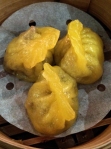
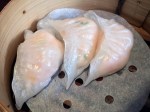


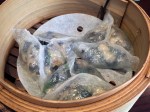
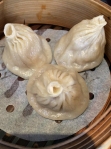




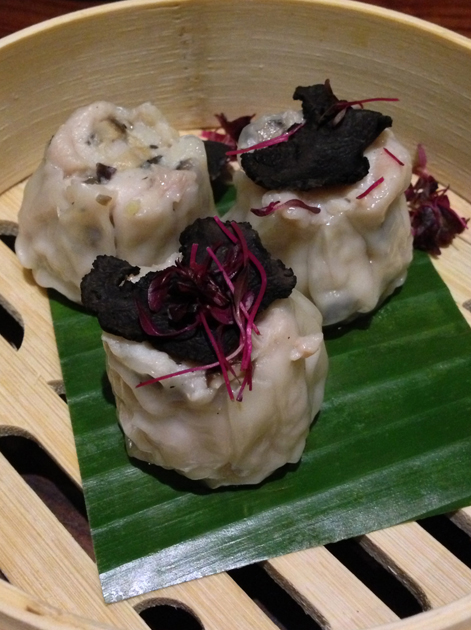

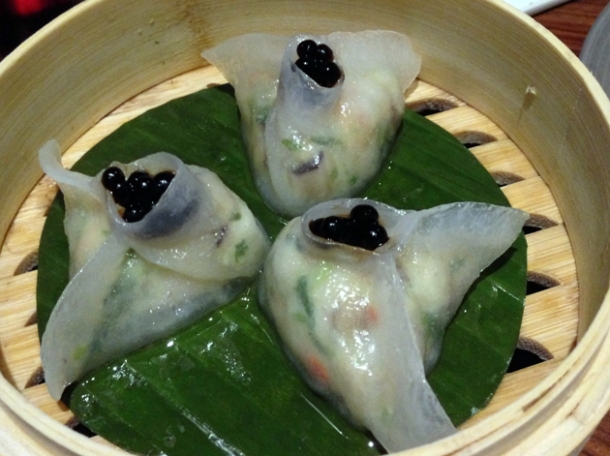
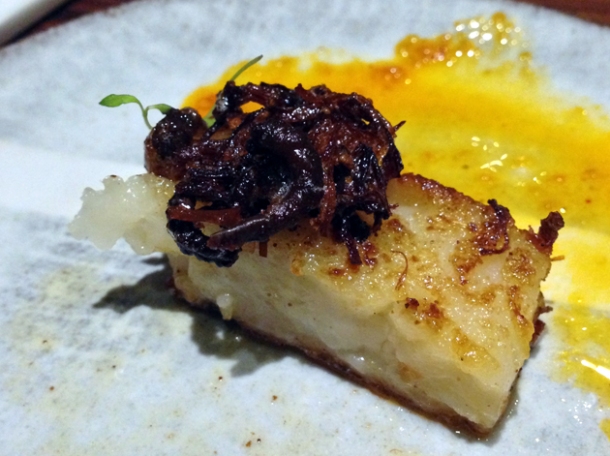

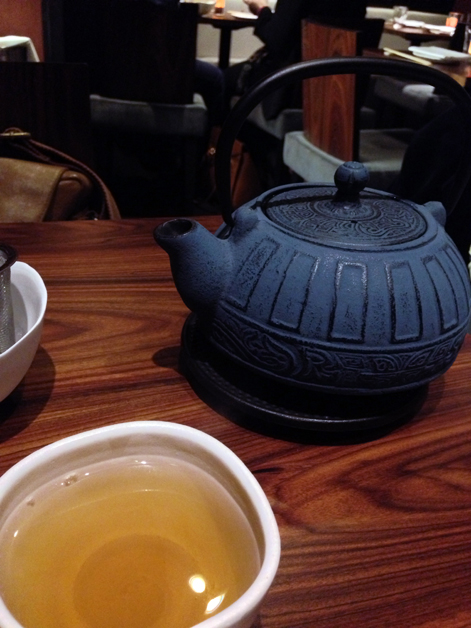

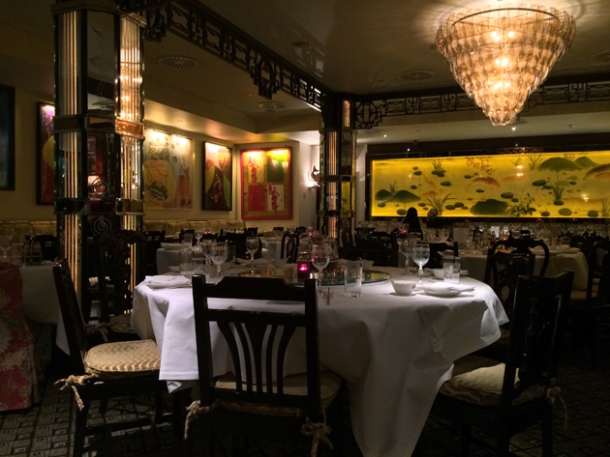


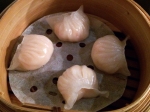
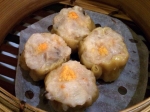
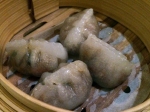

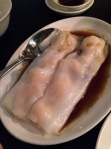
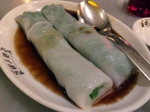


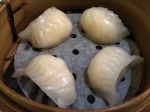




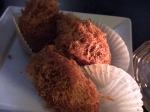
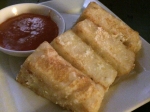


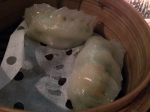
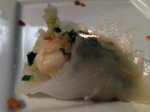
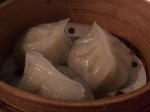

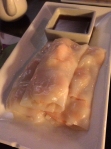
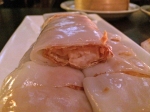

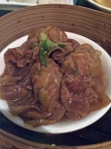
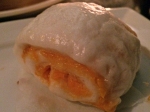
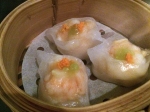

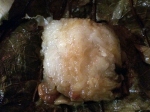
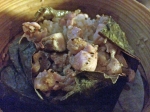
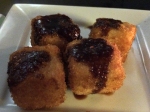
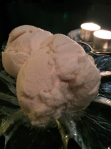
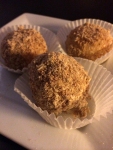
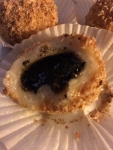
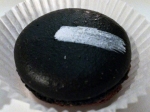

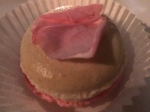

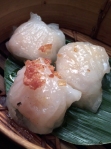
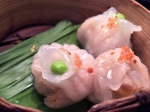
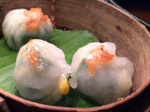

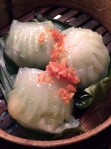

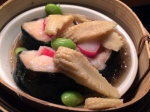
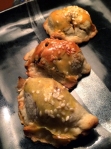


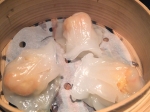
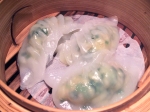


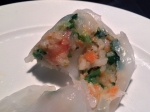
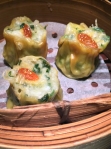
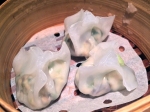



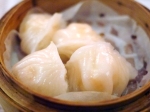
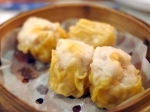

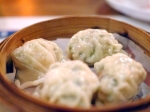
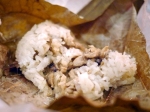
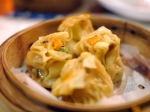

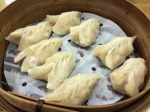

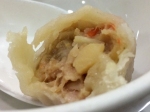
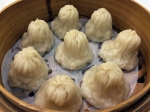

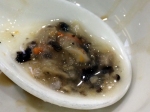

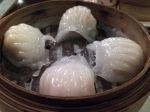
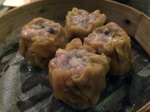

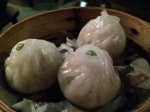


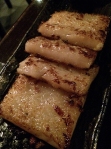

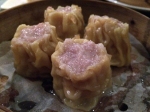

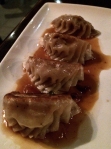

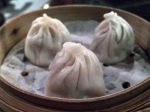
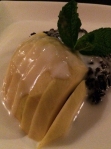
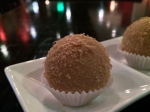


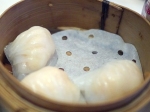
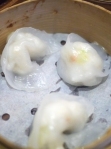
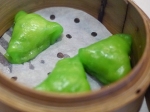

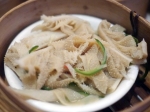
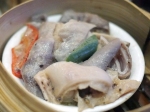
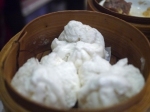
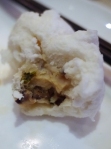


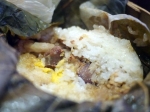

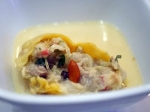

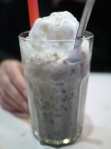

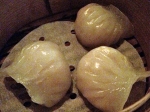
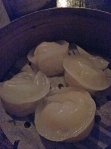
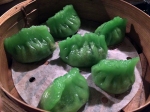
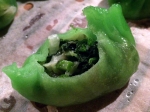

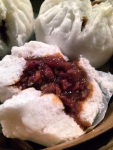


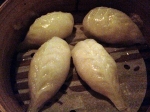

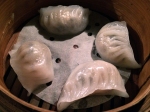
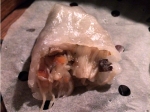

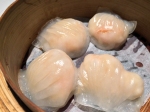

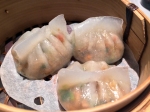
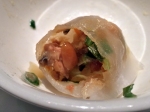
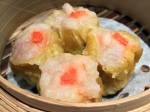
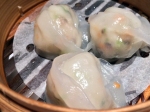
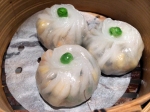

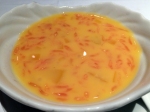

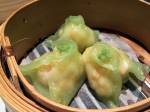
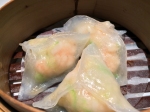

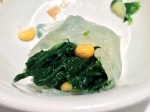
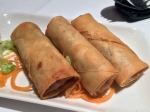
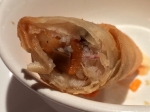
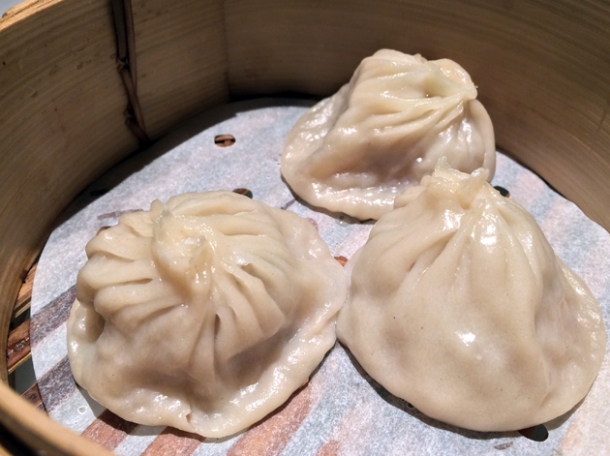
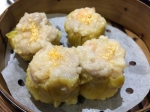
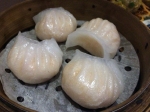
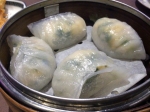
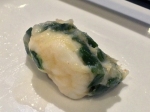

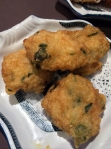
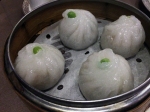
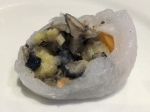

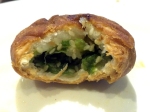

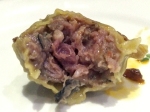
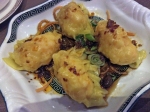

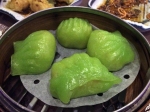
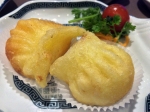


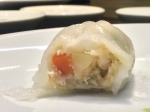
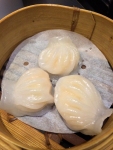
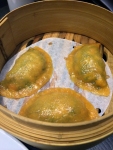



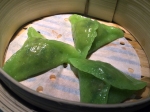


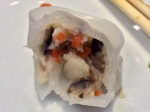
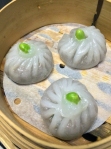



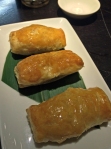
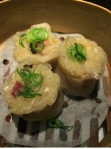

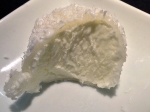

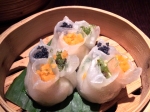

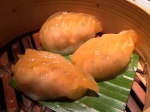
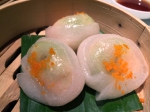
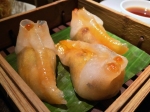

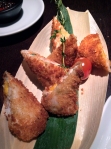
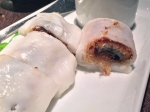
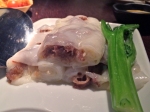

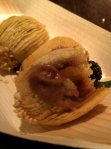
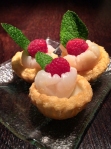


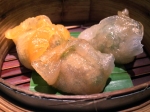

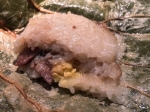


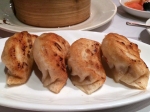

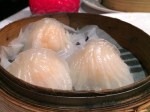
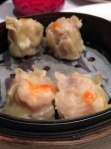
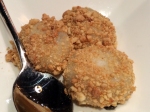
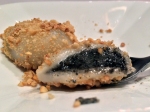

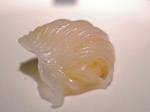
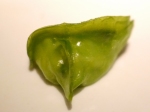
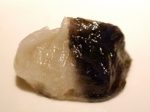

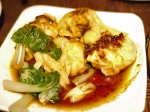
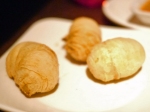

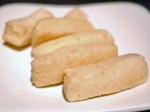

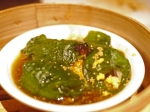

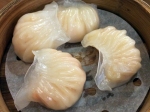
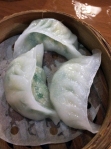
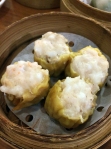




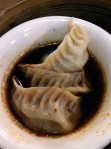
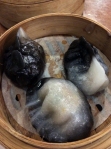

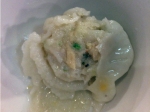
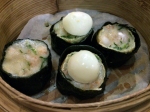
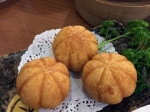
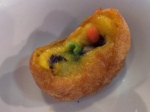
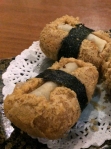



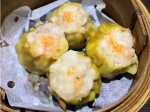
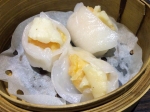
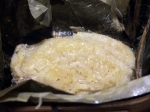
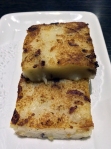


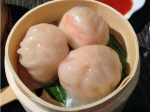
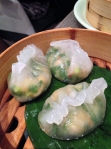

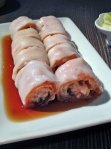
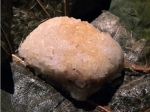
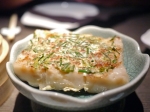
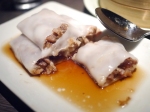

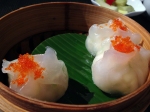
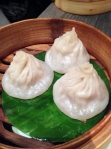

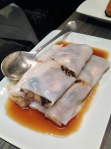
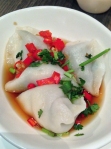
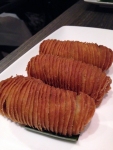
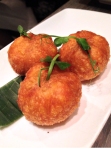
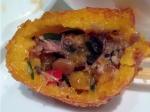
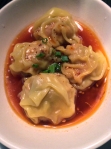
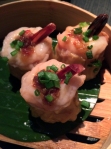
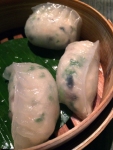
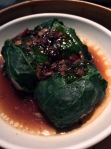


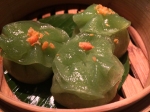



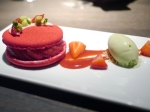
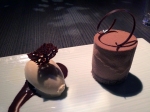

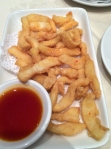

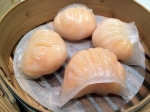
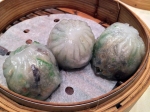
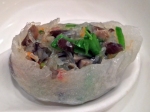
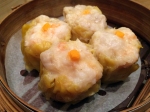
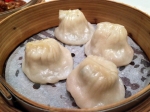


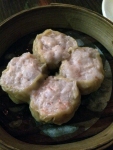
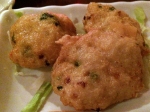

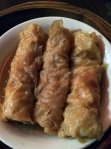
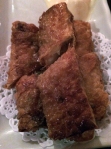
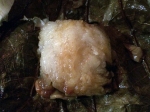
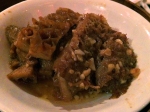


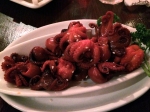
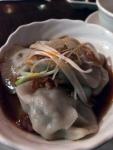
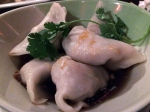


Dimsum requires a separate specialist chef. It is traditionally eaten during the day. In the evening, the chefs are changed so that the one specialising in dishes is on duty. As dimsum would not be that chef’s speciality, the quality or variety is obviously impaired.
It would be too expensive for a restaurant to effectively have two head chefs on duty at the same time. I wouldn’t hold my breath waiting for the quality to improve. I don’t think the demand outweighs the costs.
Yautcha is a specialist dimsum restaurant that only serves dimsum, hence why their quality is better in the evening.
I don’t understand how you could critique dim sum for dinner…it’s intended for breakfast/brunch. So you can’t expect to get good dim sum for dinner given that isn’t when the majority of the ordering will happen and produce is likely to be preprepared and not as fresh. Even McDonalds only serves breakfast at certain times, so in some way I blame the restaurants for confusing diners with this offering at dinner as you aren’t likely to see Chinese people taking to dim sum in the evenings.
Dumplings in general (xiao long bao etc) are eaten at anytime and are not to be confused with the ritual of dim sum.
The fact that Dim Sum is traditionally eaten for breakfast/lunch is irrelevant. People want to eat Dim Sum for dinner. There are plenty of restaurants in London that serve it for dinner (around 22 at my count). The quality is highly variable though. Only a few of them are actually any good, so this group test acts as a guide to help those who want to eat good quality Dim Sum at night.
I’ve used the terms ‘Dim Sum’ and ‘dumplings’ somewhat interchangeably both for SEO purposes and as many people aren’t aware of the distinction. Plus, my rationale for including the occasional Dim Sum dumpling dish in this round-up is mentioned in my introduction.
-The Picky Glutton
I’m with The Picky Glutton here – I know when dim sum is meant to be eaten, and why it’s generally rubbish in the evening, but I love dim sum and want to share it leisurely with friends, which is difficult to do at lunch. Mind you, I don’t have issues with eating a chicken mayo sandwich for breakfast and cereal for dinner. I’m a rule-breaker.
This page is so informative! I love all the photos and the breakdown by type. If any other good evening dim sum places do rock up, please do an update.
I had a request from my daughter for dim sum for her 16th birthday dinner and was beginning to despair until I read this article. As you say, some of us just want to eat things out of the traditional times and it was a great help in finding somewhere that wasn’t going to be a car crash or totally ruinous (her other stipulation was a place to wear heels in). Thanks to you I found Pearl Liang which was close by, affordable, decent and good fun and which I wouldn’t have found by myself. Result: happy daughter and father. I am in awe of the research that was put into this article and the dinners consumed for our viewing pleasure.
I’m glad that I could be of help and that Pearl Liang worked out for you guys!
Very helpful – many thanks. I would also recommend the Royal China in Baker Street for very decent dim-sum
I didn’t know they served dim sum in the evenings?
Pingback: The best and worst tonkotsu ramen in London – Ippudo vs Kanada-Ya vs Bone Daddies and the rest | The Picky Glutton
Nicely done – albeit rather dispiriting to read how things turned out, too!
Pingback: Babaji Pide review – Turkish pizzas hit Soho | The Picky Glutton
Would be nice to see the star ratings and pricing for all restaurants as list in the summary for the at-a-glance readers who don’t have time to trawl the entire page!
Pingback: The Duck and Rice review – Alan Yau’s sleek Chinese gastropub in Soho | The Picky Glutton
This has ot to be the definitive London dim sum review, oustanding work!
Although my only regular, Royal China (usually Docklands) is missed so cant compare. I hear they are as good as Yautcha
Royal China, as far as I can tell, isn’t open in the evenings. Unless I’m missing something?
-The Picky Glutton
Orient London (Formerly Jade Garden) on Wardour Streeet has always been a family favourite. My mum has been going there since the 80s, and she claims that it’s the best dimsum in London.
They recently changed their name and interiors, but i’ve been told that the chefs are largely the same.
You should try it out! Usually when I go i’m craving dimsum so much that it satisfies me anyway, so i’m curious to hear what you’d think of it!
It’s not clear from their website if Orient London serves dim sum for dinner. Do you know if this is the case?
Thanks,
The Picky Glutton
You’re a heathen, dim sum is not for dinner. You lost all credibility with that statement. And any pretentious clap trap retort denying that shows your complete ignorance of Cantonese cuisine.
In don’t care what you think.
-The Picky Glutton
Thanks a million for this- I will be heading to Pearl Liang!
I’ve had evening dim sum at the Aldgate branch Shikumen, which was quite good. I was impressed by exquisitely thin elastic translucent pasta casings. About 1.5 times the price of my usual daytime dim sum place in Chinatown.
Orient London is my favourite place for dim sum in Chinatown, but I believe it is daytime only. That said, I was last there in 2015 when it was still Jade Garden. Menu still looks the same and I am eager to go back.